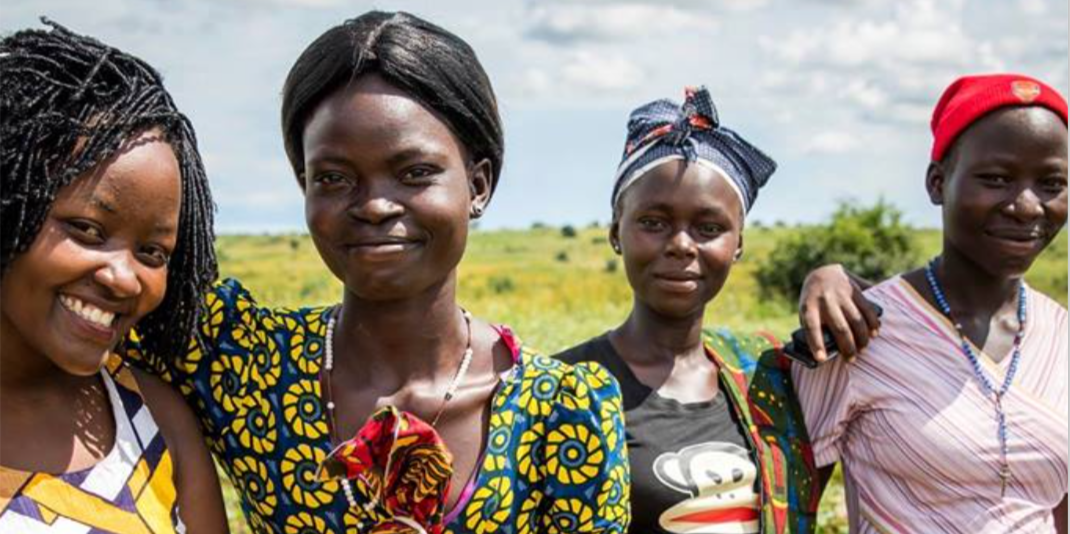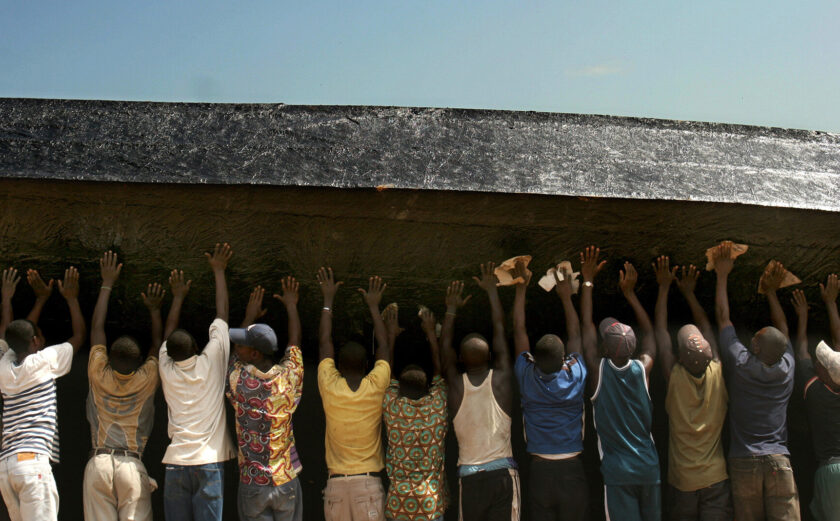
From Dependency to Partnership: Why We Need to Radically Transform the Donor-Grantee Relationship
A few months ago, I led the close down of one of the most impactful organizations I have ever known, Women Thrive. And don’t take my word for it (I was, after all, the organization’s Executive Director): you can hear it directly from the very folks we served all around the world in the organization’s final report.
When it closed down in June 2018, Women Thrive was a vibrant, global feminist network of over 300 grassroots women’s rights organizations in 53 countries. We were the leading voice when it came to ensuring grassroots women and their advocates had a seat at the table in the era of the Sustainable Development Goals (also known as the SDGs — a global roadmap to end poverty and gender inequality by 2030). We were training hundreds of women’s rights advocates each year on key topics like effective communication, fundraising, advocacy, and SDG-literacy, as well as supporting national-level coalitions focused on holding their governments accountable for implementing SDG 5 on gender equality. I could go on and on, but you get the picture. We were delivering impact and were embedded in the realities and needs of grassroots advocates who, also, co-designed and co-led every single aspect of our work.
When I became ED two years ago, I knew we had to change our business model to survive. I inherited an organization with a strong track record of impact, but like many small and medium-sized NGOs, we had been struggling financially and had failed to diversify our funding. On top of that, our work was still organized by thematic departments while our advocacy model was following a network-led and movement-building approach focusing more on processes than issues. Add to that two leadership transitions since the founder, and it’s fair to say Women Thrive was in crisis.
I immediately knew that we needed to find our own creative financial and business model to match our unique program structure: we were no longer “implementing programs”, we were a 24/7 virtual advocacy incubator for hundreds of organizations in over 50 countries based on a membership system. Our model was effective and unique — and our sector quickly began to notice. In a few months, several of our ‘competitors’ had hired us to support their own advocacy and capacity-building efforts. We created a new business model that mixed traditional grants, innovation capital from impact investing partners, and fee-for-service revenue.
Despite this programmatic success and a clear inclination towards innovation and transformation, the organization remained in a precarious position financially. I knocked on many doors and was honest about what our organization needed: investors and partners. Many donors expressed great interest in our work, and some did invest in us (we were one of the first organizations to get a grant from the Bill and Melinda Gates’ gender equality advocacy portfolio). But we also faced incredible challenges fitting into donors’ boxes. In discussions, it often felt like I was being asked to choose between innovation and security, traditional programming and growth, and short-term impact models versus long-term collective/participatory programming.
I struggled to find donors who would listen to our unique story, our unique model, and invest in what we had: an incredible, inclusive, and impactful learning model; a global community of active gender equality leaders; a unified voice that went beyond geographical boundaries or thematic silos; and grassroots-led advocacy and programming model.
We had a story to tell: one that showed how a group of feminist development practitioners and grassroots advocates had come together to merge the best of both sectors into a model that ensured ownership, accountability, and the shifting of power and resources into grassroots organizations. And on top of a story to tell, we had a contagious energy to share: one grounded in the collective partnership of hundreds of groups who were purposely joining forces to influence a high-level agenda like the SDGs. We were putting into practice the very recommendations that have come out from the feminist movement, radically shifting the way development is done. And still, all but one major foundation weren’t willing to invest in us.
Now don’t get me wrong, as the Executive Director, it was my responsibility to mobilize resources for the organization, and at the end of the day I didn’t find a way through. Throughout my two years as ED, I met incredible donors and philanthropists willing to invest in the very values and mission we had at Thrive. To them, I am grateful.
But I also learned that the traditional nonprofit funding model comes with restrictive definitions and inflexible silos. It is a model that praises disruptors and innovation, but still lags behind when it comes to actually investing in them.
In most of my interactions with donors, it felt like I was being asked all the wrong questions. I was asked to choose a thematic focus such as gender-based violence or women’s economic empowerment. But as an advocacy network, we don’t focus on the actual issues — our members do that just fine. Instead, we focused on strengthening the global backbone of these groups and eliminating the barriers that hold women back from leadership and participation. I was asked to prioritize specific countries, but our model was already built for global scale, ensuring that whether you are in rural Nepal or urban Nigeria, you had the same access to our tools and opportunities. I was asked to adapt our cash-flow needs to grant cycles and timelines that contributed to push us into bankruptcy. I was also turned back because our organization was too small in staff, had too many members, not enough members, was too small in scale, too big in scale… The list could go on and on.
Throughout this process, I have talked to friends and colleagues on both sides, listening to stories of grantor and grantee experience. These conversations made me realize I wasn’t alone in feeling the system was failing us both.
In a great piece entitled the End of the Grant era, Ellen Sprenger writes that “frontline leaders and their grant makers need to move from a transactional to a transformational relationship”. Open Road Alliance recently published a Roadblock Analysis Report that shows that Funder-created roadblocks amount to 47% of nonprofits’ impact-threatening problems. Especially in times of leadership transition or new internal direction, small nonprofits seem to face incredible pressures to resist change and transformation instead of embracing it. In a piece published on Nonprofit AF, the writer puts it simply: “We need to acknowledge that this is a serious issue, that funder behavior is hurting nonprofit work and also driving effective leaders out of the sector”.
So what will it take for donors and nonprofits to align themselves when it comes to investing in innovation that requires non-traditional funding mechanisms? How shall we adapt to the incredible opportunities that are out there if we fail to change the funding narratives, processes and relationships between donors and nonprofits?
Here are a few things I believe would make a huge difference:
- Let’s focus on milestones rather than timelines. Putting a timeline on a growth and innovation process can restrict its very progress. If we were to start the conversations around important milestones the organization is aiming for, and how that aligns with donors’ missions and values, we would have a chance of funding transformative visions and movements rather than short-term programming. Instead of “what will you achieve in two years”, how about “what do you need to make sure that 100% of your members get to this particular milestone by 2020?”. These are the discussions we were ready to have — but couldn’t find folks to have them with.
- Let’s close the listening gap and focus on dialogue and horizontal communication. In almost every meeting I had, I was told that we didn’t quite fit in the foundation’s strategy (or that a new strategy was being created and we would need to wait to see if we were a good fit). If only we could go from a donor asking “what can you do for us (and our strategy)” to “what can I do for you and the folks you are serving,” conversations might lead to a better understanding of how both groups could align and match values and mission. Especially for global networks and non-traditional programming models, a horizontal dialogue between the women we serve, our teams, and our donors would not only better show the impact of our work but also building a truly authentic partnership focused on common goals more than negotiated budgets. It would also ensure that the incredible expertise held in both donor institutions and grassroots women’s groups can fluidly be shared and contribute to a shared vision for progress. We tried to set up these kinds of discussions — but never managed to pull them off.
- Let’s look at funding mechanisms that are flexible and expandable.We wanted to make sure that the grants we were receiving also financially benefited our members working on particular projects within the network. We felt strongly about ensuring resources could flow between Women Thrive and groups on the ground in a way that enabled stronger advocacy campaigns to be delivered. To do that, we were inspired by some of the funding mechanisms our members all around the world use, such as revolving funds. Having these conversations with major foundations was simply not possible, and the amount of risk and fear linked to the very notion of alternative finance mechanisms was very strong. We were also eager to find funds to look at partnerships and cross-fertilization. For example, a percentage of funding that could be used to fund joint programming with some of our sister organizations — leveraging the complementarity of our missions and programs, rather than making us compete for the same resources. These were equally difficult — even impossible — conversations to have.
- Let’s democratize the funding world. I understand the value of networks and connections, and the benefits of relationships based on trust. But as a young leader who was new to the funding world, I struggled to get answers to my emails or to start meaningful conversations with folks who had the power to decide where resources were going. Access to decision-makers in the funding world is a serious topic. And if it was difficult for me based in Washington D.C., imagine what it looks like for our members all around the world. The idea of democratizing the funding world is really about making sure foundations are equipped to listen and consider every single non-profit who believes there is a pitch to make. None of the foundations I approached except one had an online system where one could pitch an idea or a program, trusting it would be read and considered by the team on the other side of the screen. In 2018, we should be able to leverage technology alongside relationship building to create safe spaces for exchange and conversations.
Our sector needs a radical transformation if we are to adapt to changing times and new models of impact-driven work. We need to disrupt traditional funding models to find new solutions to supporting innovation. More and more non-profit leaders are finding themselves evolving to new and unique business models. We need our donors to join us on this journey. The goal is still the same: ending poverty and inequalities. The path to success, however, needs to adapt to its time.
The good news is that we have the power to fix this. As explained in the Open Road Alliance Roadblock Analysis, “the good news is that the philanthropic community can directly affect the main threat to impact.” By working with nonprofits to support innovation and build lively value-driven partnerships, donors can revolutionize the way we fund social change. So that we can thrive, and not just survive.
This post was written by Emily Bove, Senior Fellow at InterAction
This blog post was originally published at www.medium.com





